5 methods & 30 eggs! Let’s find out the best way to boil an egg, even if there is no boiling at all!
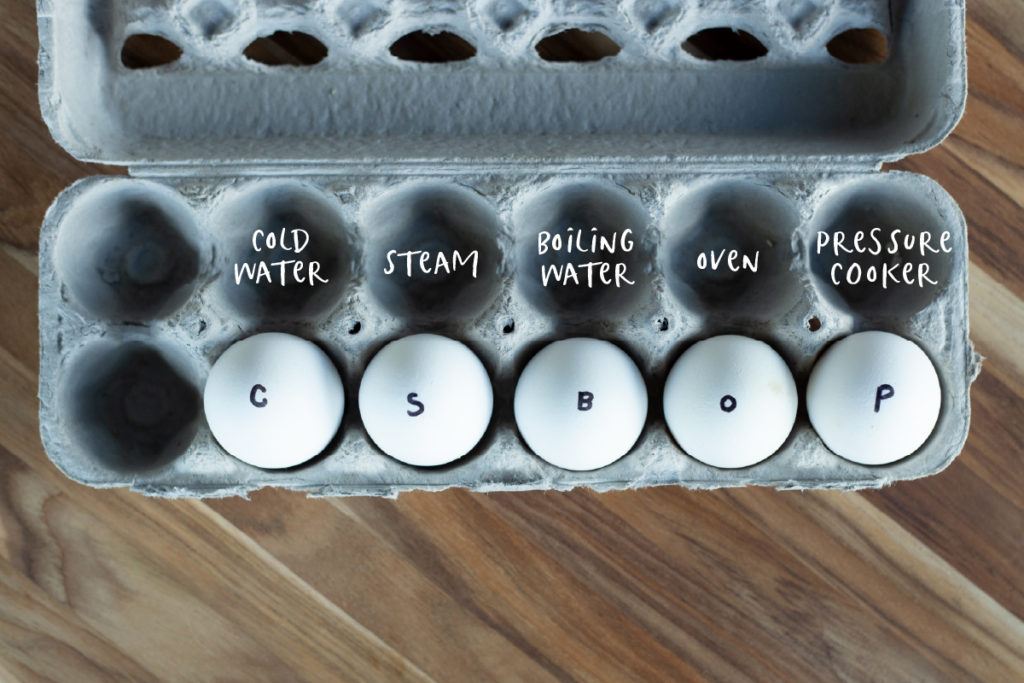
The ensure consistent testing, we performed the tests with the following conditions:
- All the eggs came from the same package.
- Each batch contained 6 eggs.
- The eggs went straight from the fridge, so they were cold when we began cooking.
- For the eggs that were cooked on the stovetop, we used the same pot on the same burner, allowing the pot to cool between each batch.
- We cooked the eggs to the time recommended for fully set yolks. The exact time varied for each method, but they were all supposed to cook the yolks to perfect doneness.
- They were all plunged into an ice bath with three cups of water and two cups of ice, for 15 minutes.
- Last, they were placed into the fridge for two hours before we peeled them.
We followed these methods to keep the results as controlled as possible. Outlined below are each of the methods we tested, as well as the results from each test.
Cold Start
- Place 6 cold eggs in a pot in a single layer.
- Fill pot with enough water to cover the eggs with 1″ of water.
- Place on medium-high heat and bring to a boil.
- Remove from heat and cover the pot with a lid.
- Set timer for desired amount of time ( 12 minutes for this test).
- Remove from pot and immediately plunge in a ice water bath for 15 minutes.
These eggs were hard to peel. The eggs were cooked nicely, but peeling them was a nightmare. Also, they took a long time to prepare (22 min to boil water + 12 min to cook = 32 minutes). We do not recommend this method.
Steamed Eggs
- Add 1″ water to a pot and place a steam basket insert inside.
- Cover with a lid and bring to a boil over medium-high heat.
- Once the water has boiled and steam has been generated, use tongs to add 6 cold eggs in a single layer.
- Cover the pot and cook for desired amount (13 minutes for this test).
- Remove from pot and immediately plunge in a ice water bath for 15 minutes.
These eggs peeled very nicely. The peels came of in large pieces with very little effort. The egg yolk was very nicely cooked and the egg whites were very tender. This method was very quick, because the water reached a boil very quickly. It also had less breakage than the next method.
Boiling Water
- Add enough water to a pot so that when the eggs are added, they’ll be submerged with about 1″ of water.
- Bring water to a low boil (200 Degrees F) and add 6 cold eggs. Using tongs or a mesh strainer will prevent the eggs from cracking.
- Place the lid on and allow water to return to a low boil.
- Then reduce heat to low and simmer eggs for desired time (12 minutes for this test).
- Remove from pot and immediately plunge in a ice water bath for 15 minutes.
This method produced very nice eggs. It is a bit tricky adding the eggs to the boiling water, which is the hardest part of this method. One egg did break during the process. The yolk was nicely cooked. The whites were firm, but not rubbery. And they were very easy to peel.
Oven
- Preheat the oven to 325 degrees F.
- Place 6 eggs in a muffin tin.
- Bake for desired time (30 minutes for this test).
- Remove from the oven and immediately plunge in a ice water bath for 15 minutes.
This was our least favorite method. It took the longest amount of time (20 minutes to heat oven + 30 minutes of cooking = 50 minutes). It smelled awful and left brown spots on the shell and the egg whites. The eggs were unevenly cooked, leaving one side over done and rubbery, while the other side was undercooked and slimy. Plus, they smelled awful. We do not recommend this method.
Pressure Cooker
- Add 1 cup water to an electric pressure cooker. Place a metal trivet in the pot. Place 6 cold eggs on the trivet.
- Select high pressure and set timer for desired amount of time (6 minutes for this test).
- When finished, quick release the pressure.
- Remove from the pressure cooker and immediately plunge in a ice water bath for 15 minutes.
These eggs were mostly easy to peel. 2 of the 6 had a bit of sticking, but the other 4 peeled easily. This method is mostly hands-off and hard to mess up, but the egg whites were very rubbery. Also, the places where the eggs touched during cooking, resulted in light brown and tough spots on the egg whites.
Conclusion
Overall, we can fully recommend the steam, boiling water, and pressure cooker methods. Choose steam if you prefer tender egg whites and choose boiling water if you prefer your egg whites a bit more firm. An advantage to both of these methods is the ability to remove the eggs at any time during the cooking process. This allows you to make soft and hard boiled eggs in one batch.
The pressure cooker is easy, foolproof, and results in easy-to-peel eggs. Just use caution not to overcrowd the pot, to avoid tough, overcooked spots. If you own a pressure cooker, give it a try and decide what you think! Many people love this method. If you don’t own one, you’ll get by just fine with the steam or boiling water methods.
Now, we do not recommend the cold water or the oven methods. Ever. The eggs were cooked subpar. But most of all, they were terrible to peel. We lost much of the egg white during the peeling process. For this reason, the cold water and oven methods are not recommended.
| METHOD | TIME COOK | TOTAL TIME | EASY TO PEEL | PROS | CONS |
| Cold Water | 12 min | 34 min | NO | -nice yolk | -took a long time |
| Steam | 13 min | 16 min | YES | -tender whites -perfect shape | |
| Boiling Water | 12 min | 16 min | YES | -firm whites -perfect yolk | -one egg broke |
| Oven | 30 min | 50 min | NO | -very easy | -unevenly cooked -smelled terrible -left brown spots |
| Pressure Cooker | 6 min | 17 min | YES | -hands off | -rubbery egg whites |
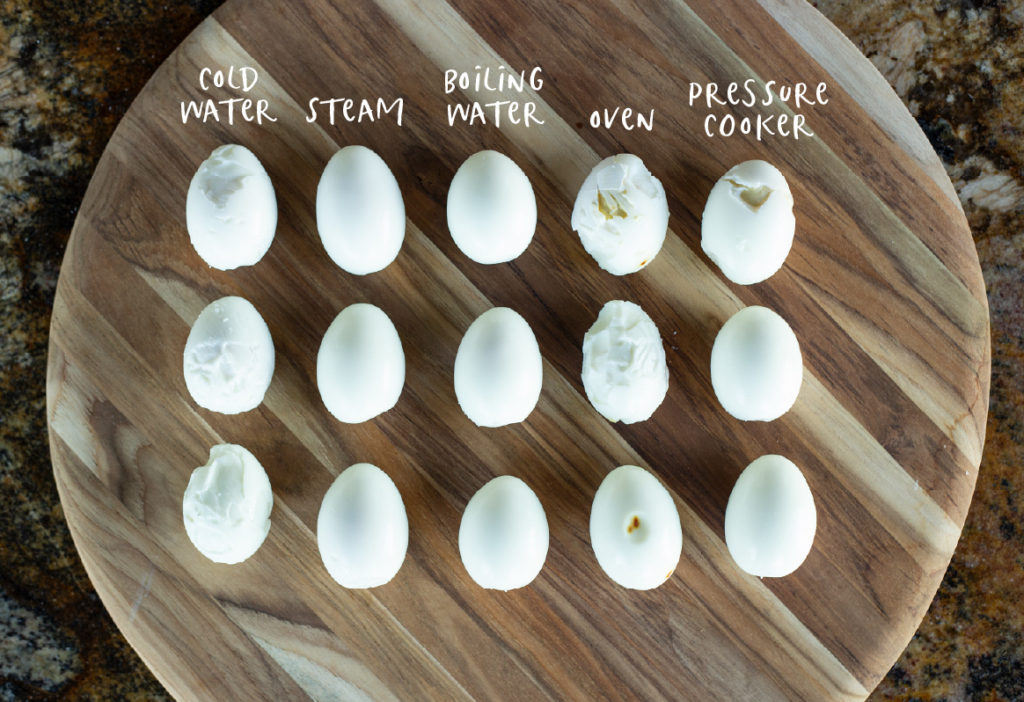
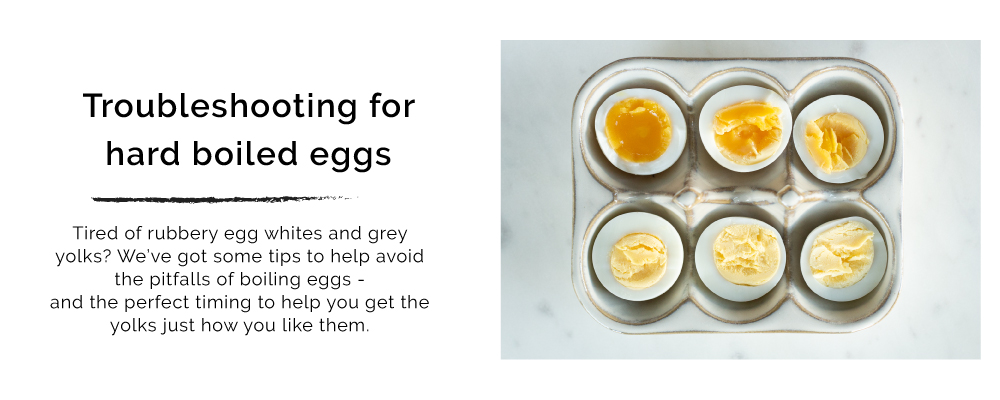
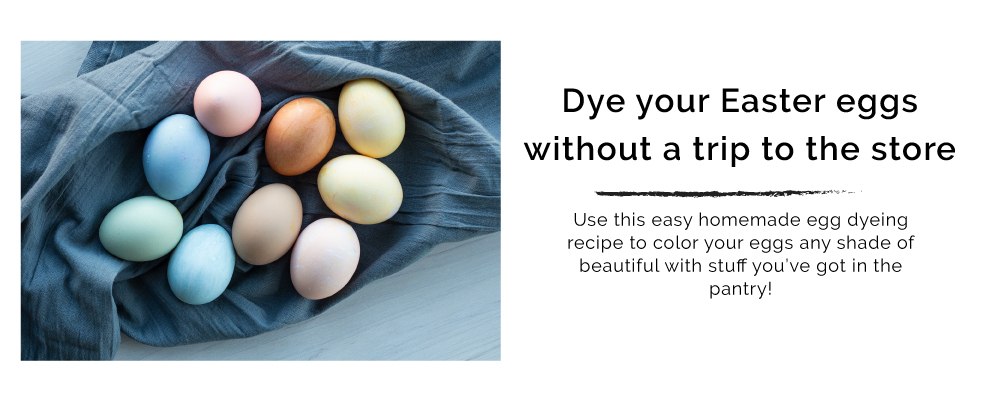
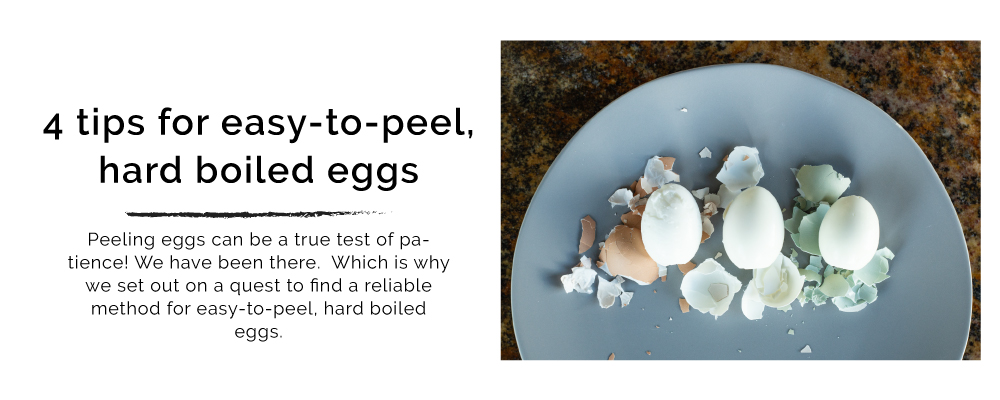

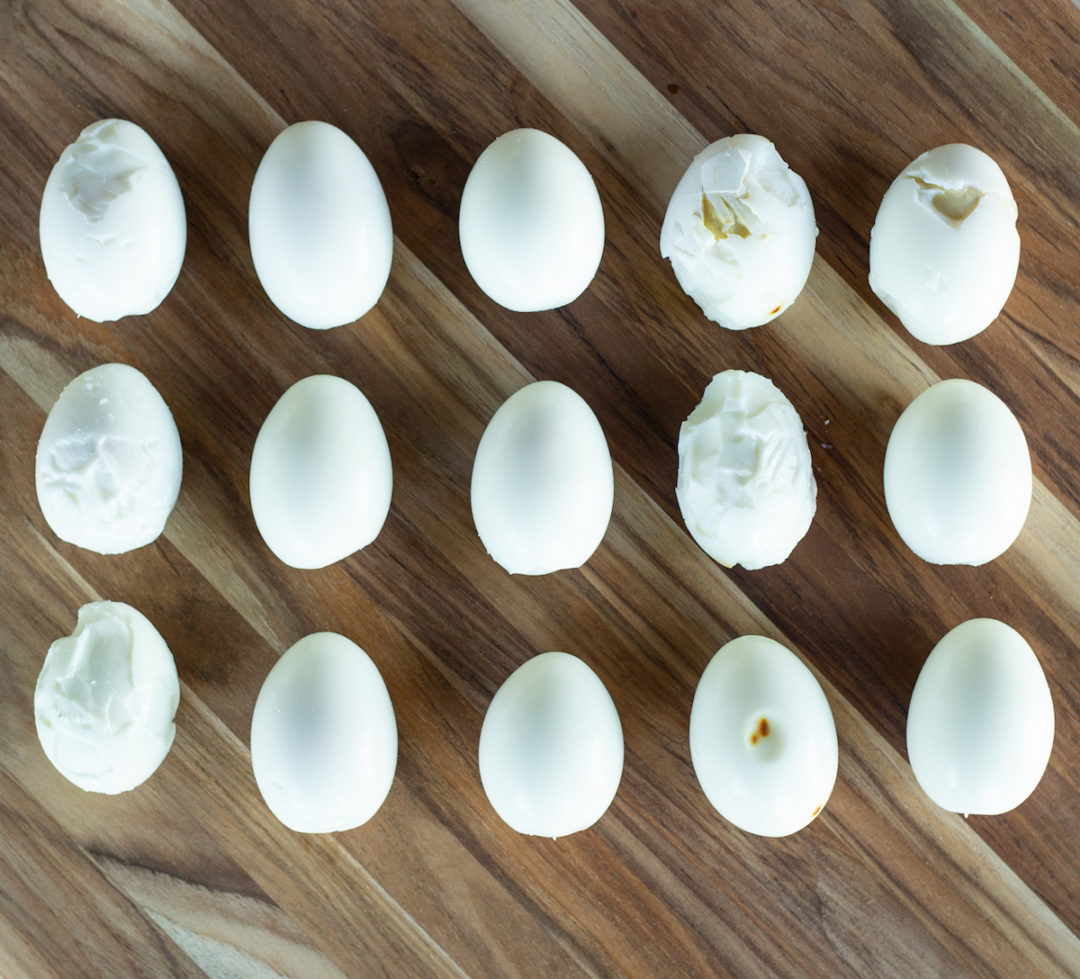
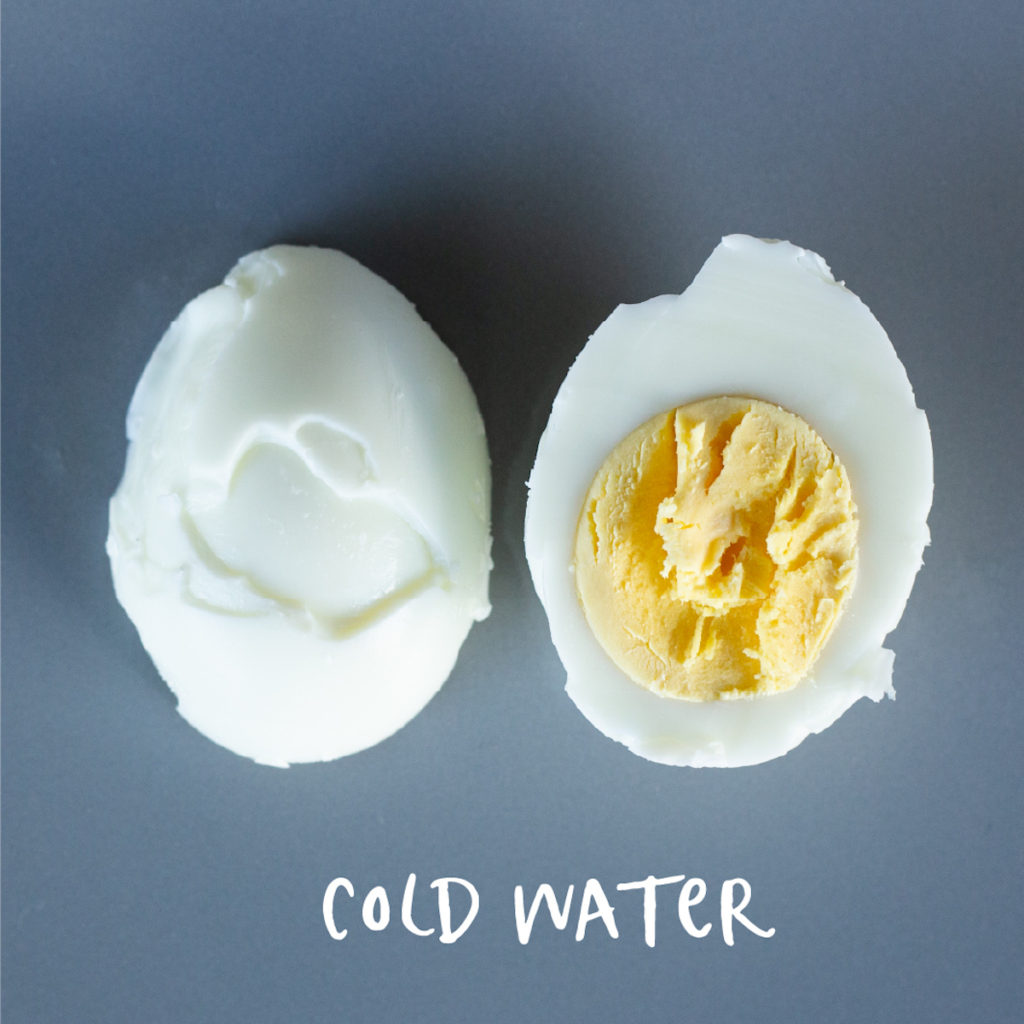
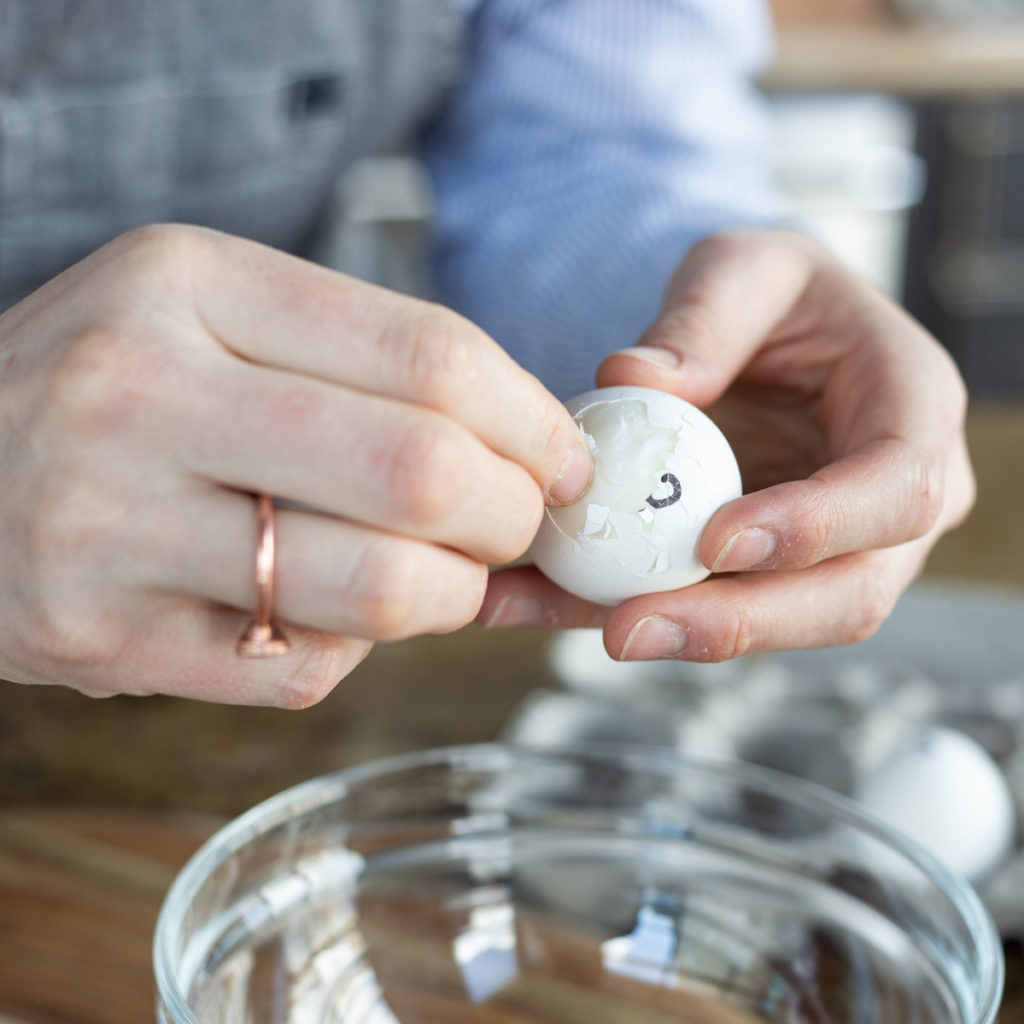
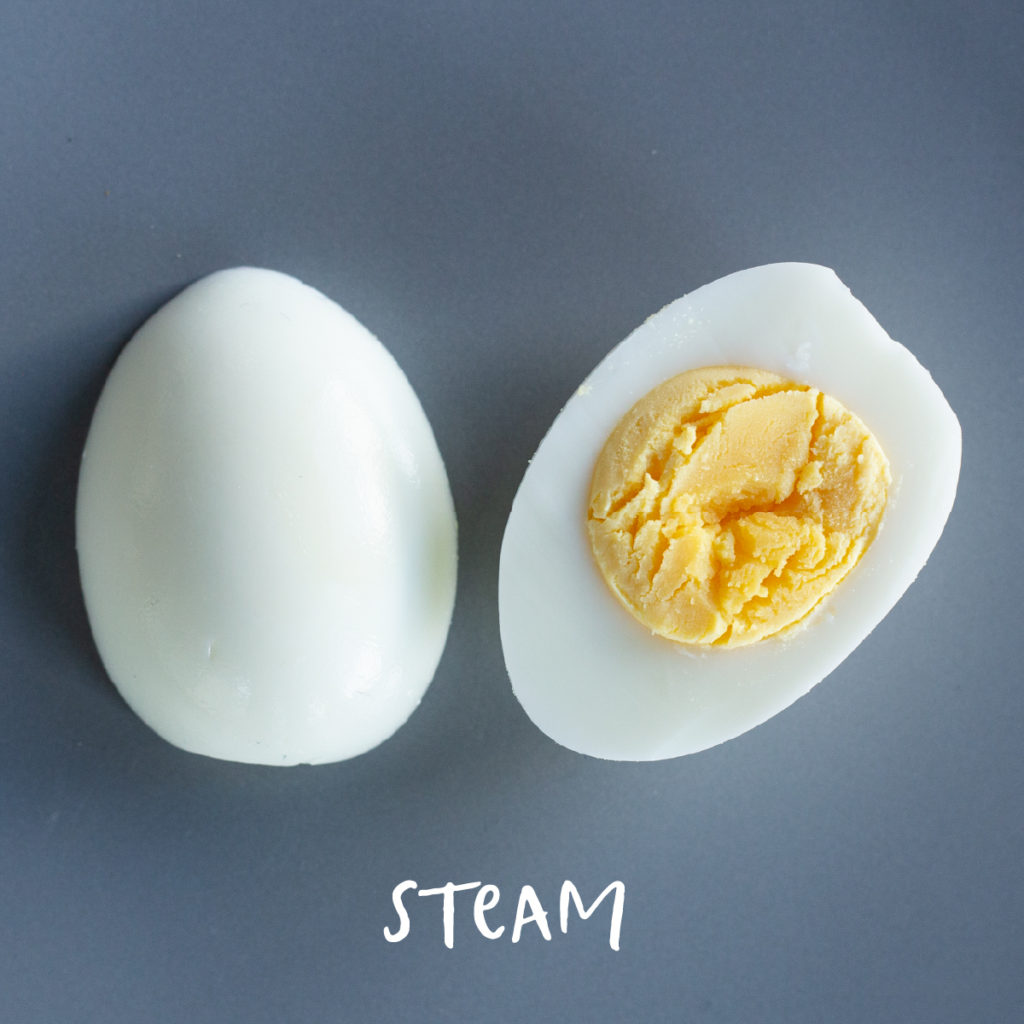
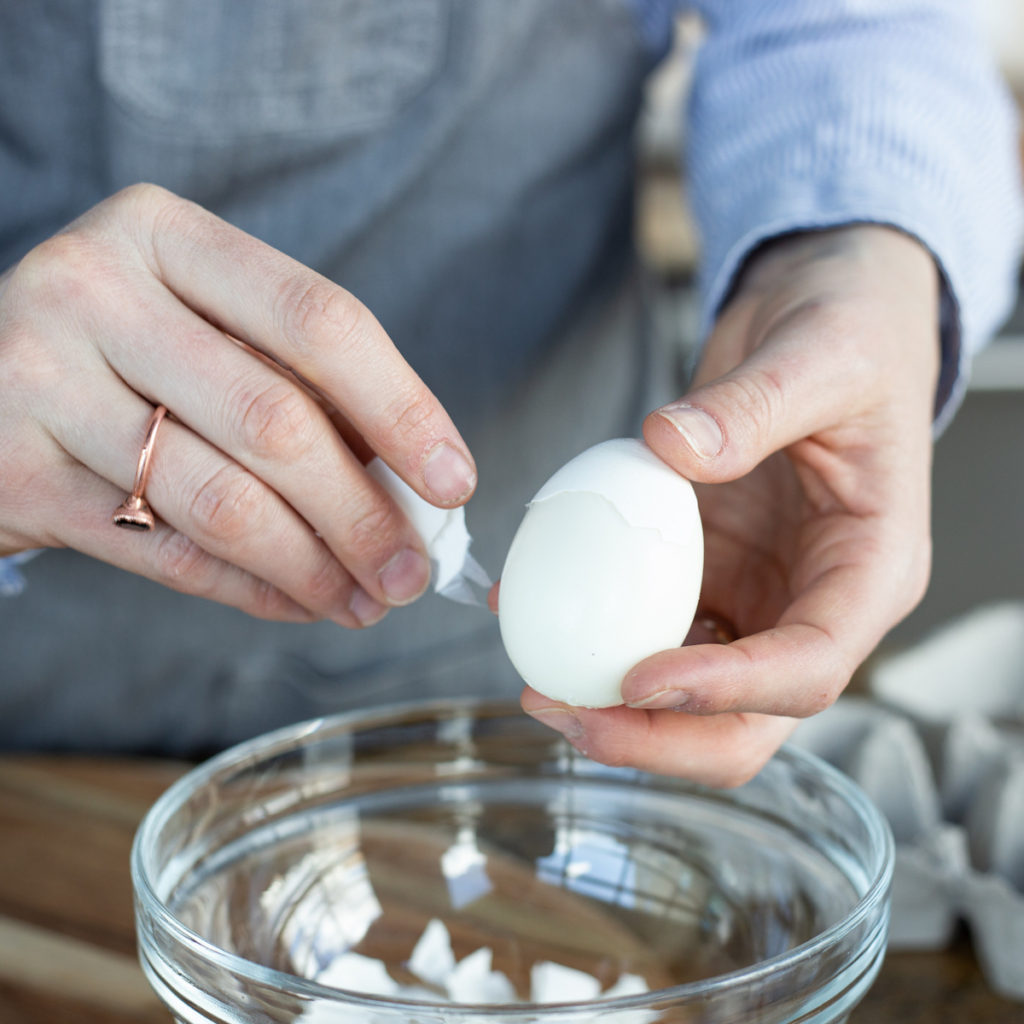
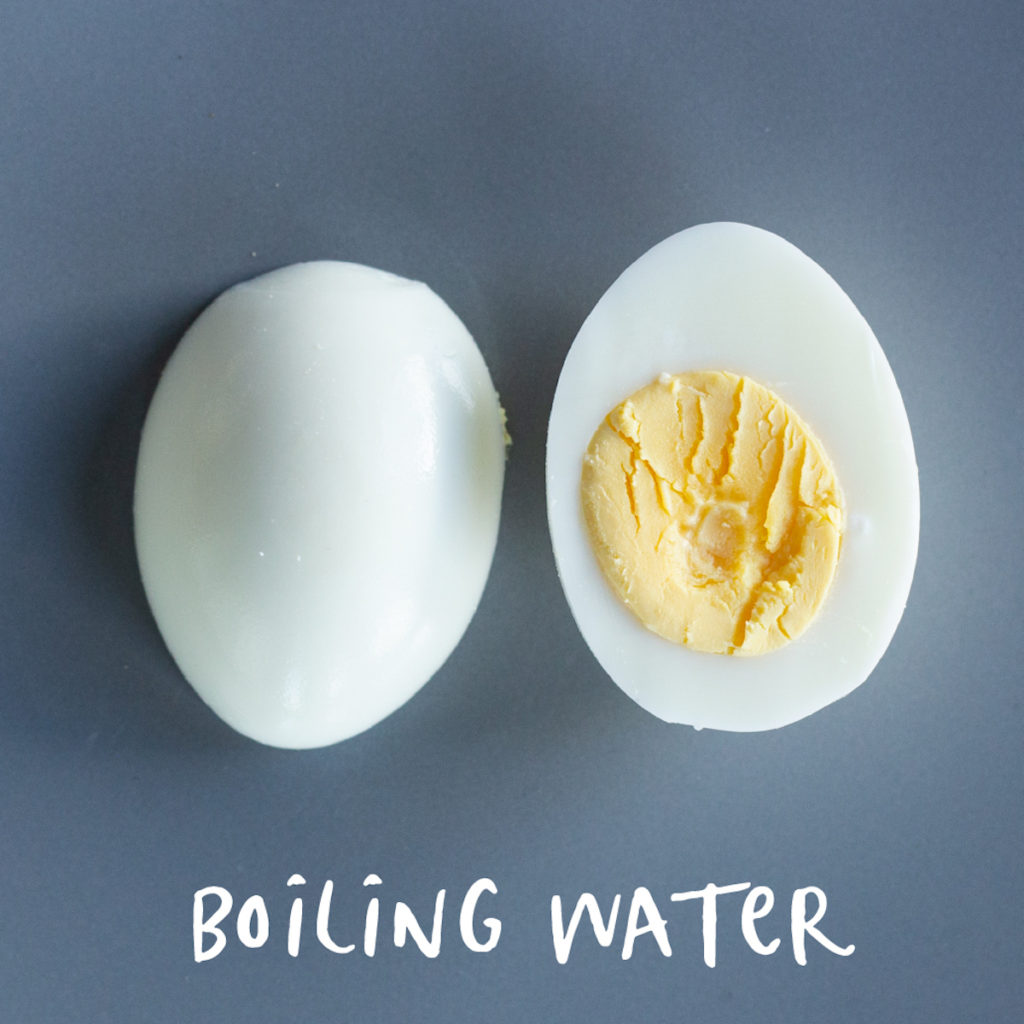
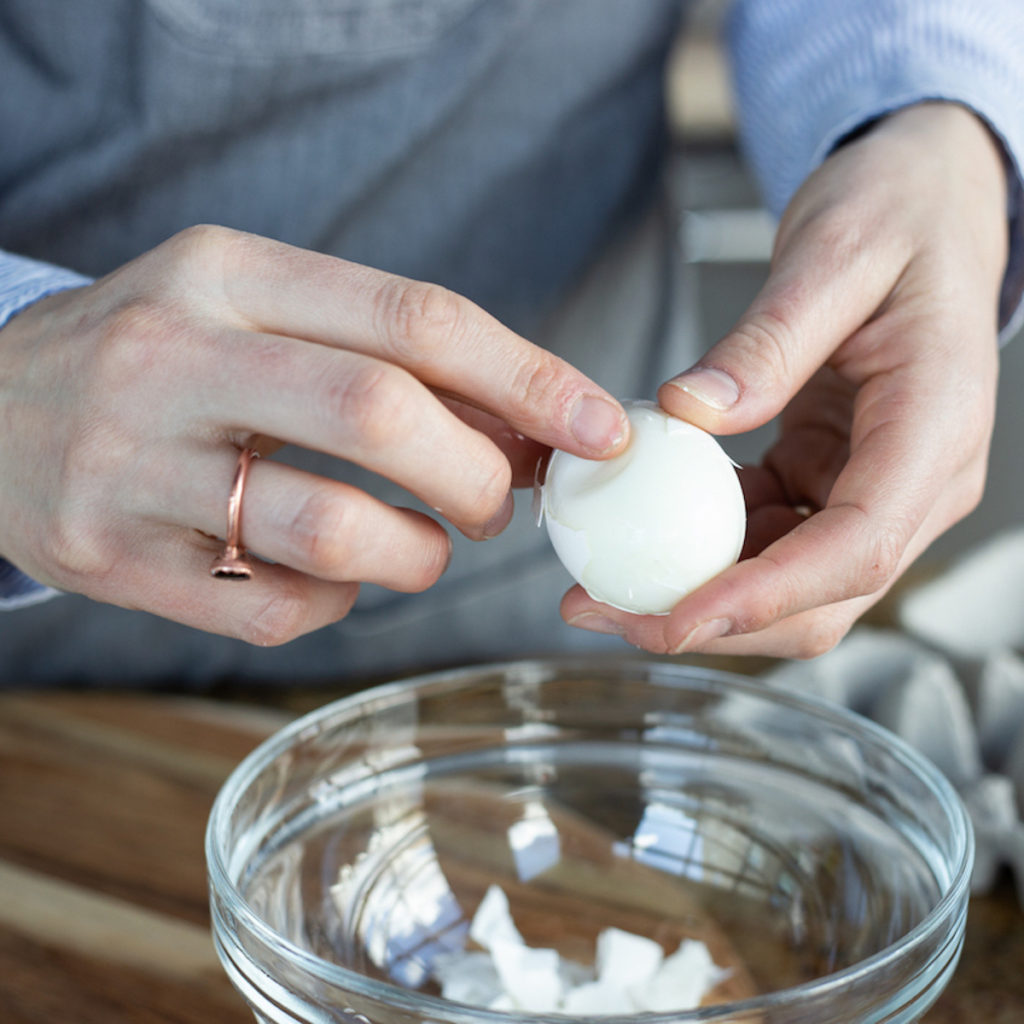
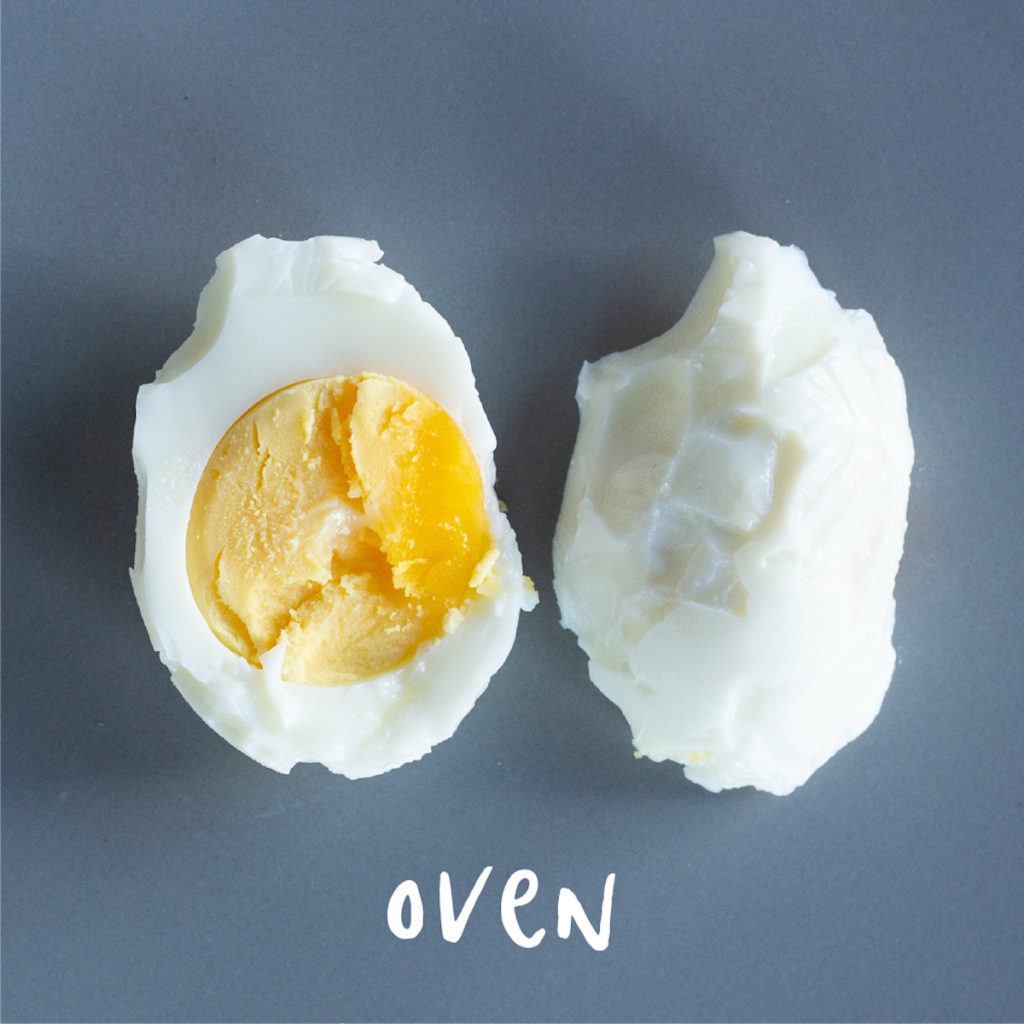
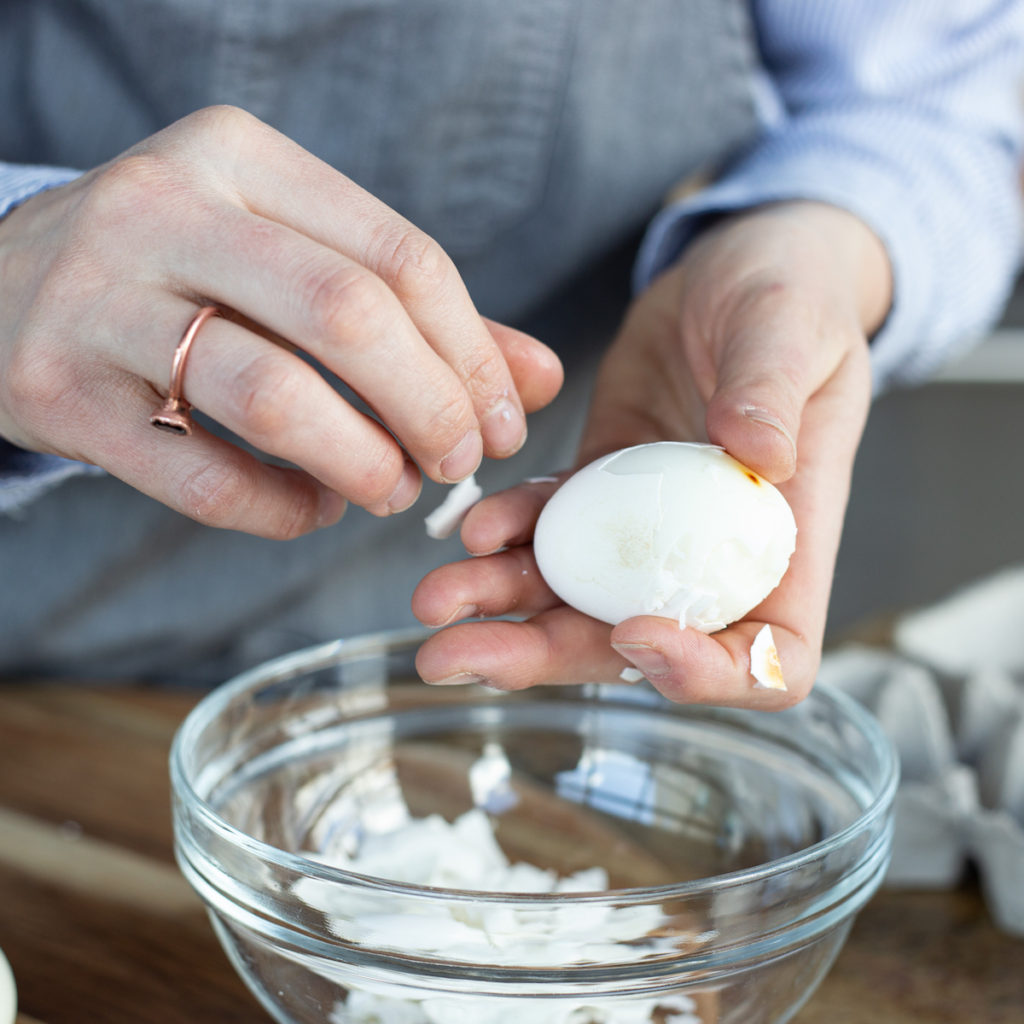
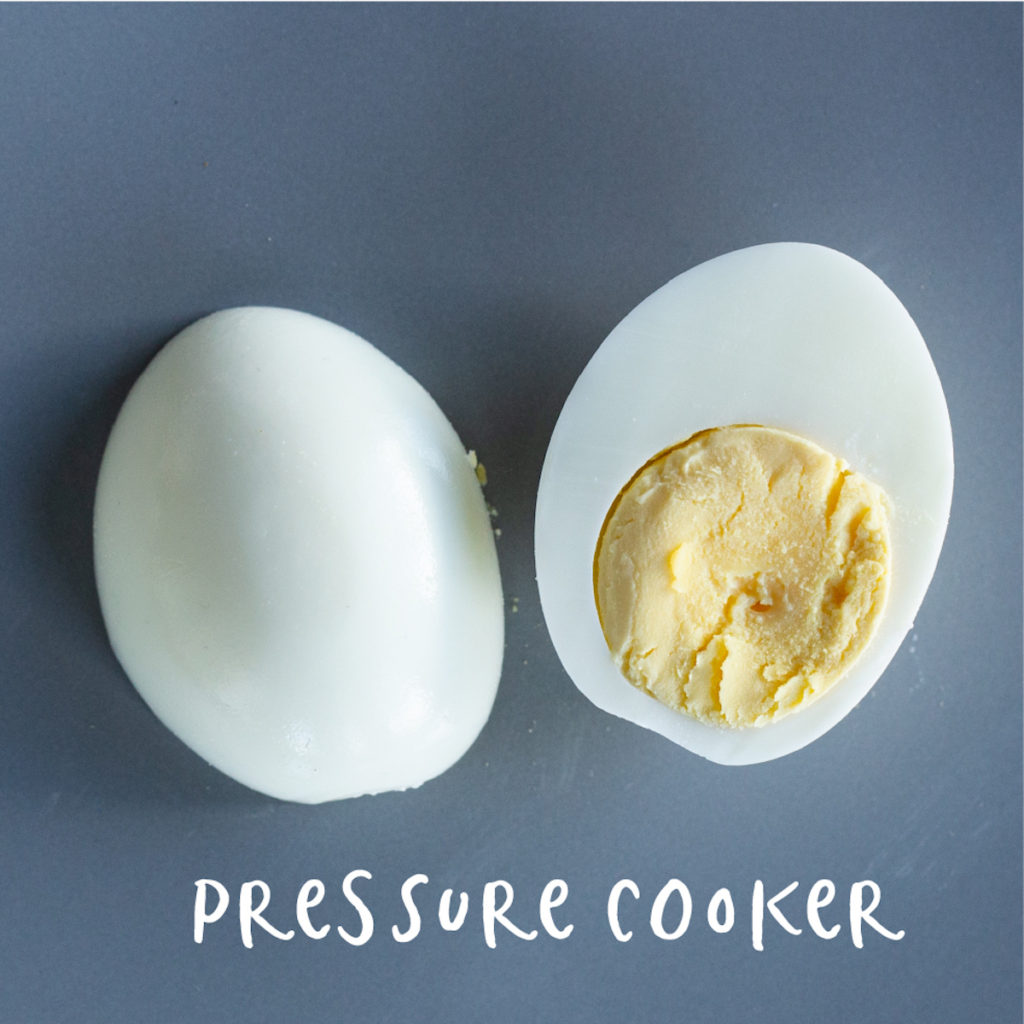
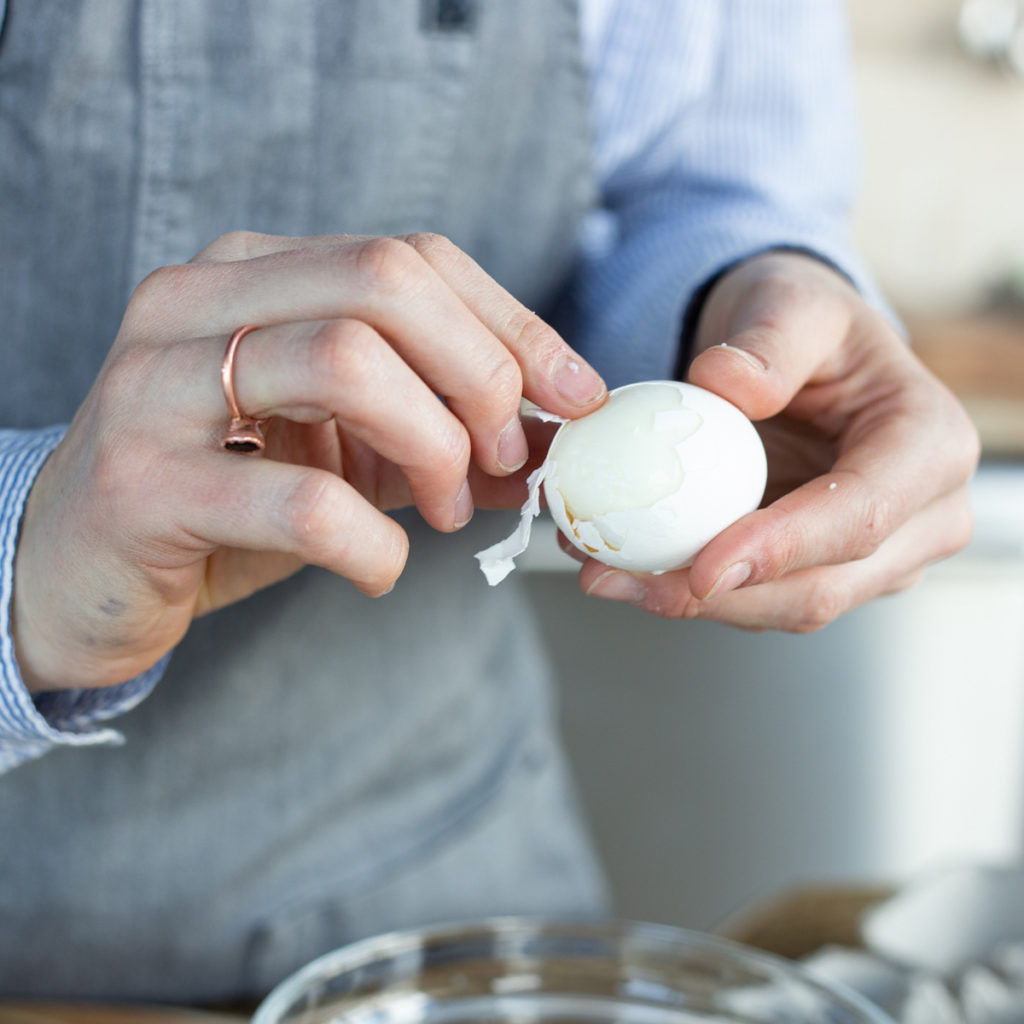
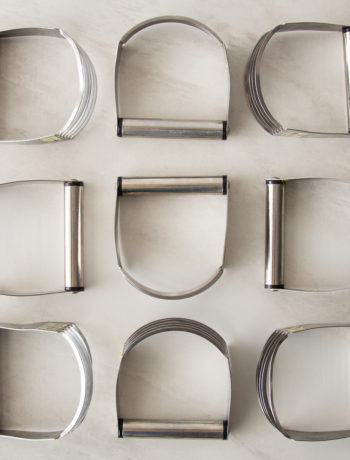
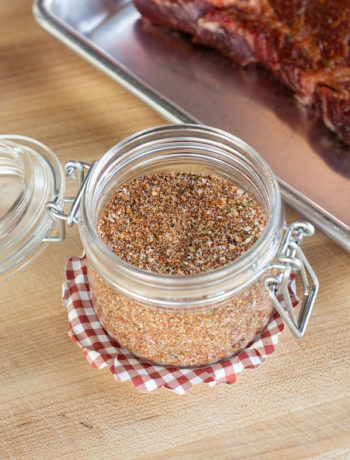
Linda Muir
April 9, 2020 at 7:07 pmQuestion-On the boiling method, did you leave the lid on during the 12 minutes of cooking time??
connie
May 5, 2020 at 3:08 pmGreat Question! Yes, we left the lid on during the cooking time.
Wendy
April 9, 2020 at 2:30 pmIf you add salt to the water while boiling the eggs, they eggs will not crack.
loveeggs
April 8, 2020 at 2:42 pmThank you! I really liked this egg test.